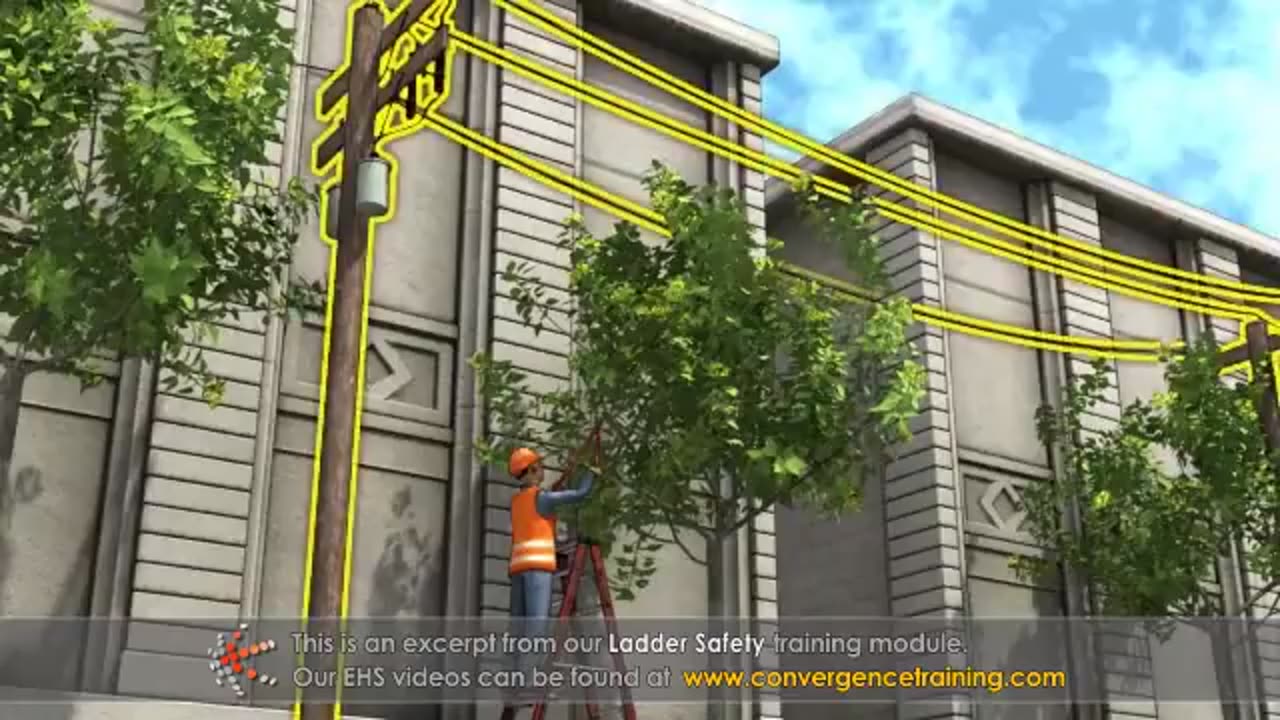Premium Only Content

Ladder Safety Training
### **Ladder Safety Training Outline**
This training covers safe practices for using portable and fixed ladders, focusing on OSHA regulations and industry best practices to prevent ladder-related accidents.
---
### **1. Introduction to Ladder Safety**
- **Why Ladder Safety is Important**
- Common ladder-related injuries and fatalities.
- OSHA ladder standards (29 CFR 1910.23 for general industry, 29 CFR 1926.1053 for construction).
- **Types of Ladders**
- Step ladders, extension ladders, fixed ladders, platform ladders, and multi-purpose ladders.
- Selecting the right ladder for the job.
---
### **2. Ladder Inspection and Maintenance**
- **Pre-Use Ladder Inspection**
- Checking for:
- Cracks, bends, or splits in the ladder material.
- Loose or missing rungs, rails, or hardware.
- Damaged feet or non-slip bases.
- Grease, oil, or other contaminants.
- Removing defective ladders from service.
- **Proper Ladder Maintenance**
- Cleaning and storing ladders properly.
- Protecting ladders from weather and harsh conditions.
---
### **3. Setting Up Ladders Safely**
- **Choosing a Safe Location**
- Stable, level surfaces.
- Avoiding slippery or uneven ground.
- Checking for hazards (e.g., electrical wires, obstructions).
- **Securing the Ladder**
- Using locking mechanisms on step ladders.
- Securing the base and top of extension ladders to prevent slipping.
- The "4-to-1 Rule" for extension ladders: Place the base 1 foot away from the wall for every 4 feet of height.
---
### **4. Proper Ladder Use**
- **Climbing and Working Safely**
- Always face the ladder while climbing.
- Maintain three points of contact (two hands and one foot or two feet and one hand).
- Keep your body centered on the ladder (“belt buckle rule”).
- **Prohibited Practices**
- Overreaching or leaning too far.
- Carrying tools or materials while climbing (use a tool belt or hoist instead).
- Standing on the top two steps of a step ladder.
- Using ladders horizontally as scaffolding or platforms.
---
### **5. Fall Protection**
- **When Fall Protection is Required**
- Fixed ladders over 24 feet require a cage, well, or personal fall arrest system.
- **Best Practices**
- Using tie-off systems where applicable.
- Training employees on fall arrest systems.
---
### **6. Special Considerations**
- **Electrical Hazards**
- Maintaining a safe distance from power lines.
- Using non-conductive ladders (fiberglass or wood) around electrical work.
- **Weather and Environmental Hazards**
- Avoiding ladder use in high winds or slippery conditions.
---
### **7. Emergency Procedures**
- **Responding to Ladder Incidents**
- First aid for ladder-related injuries.
- Reporting incidents and near-misses.
---
### **8. Hands-On Practical Training**
- **Ladder Inspection Exercise**
- Identifying defects on real or simulated ladders.
- **Safe Ladder Setup**
- Practice positioning and securing different types of ladders.
- **Proper Use Simulation**
- Demonstrating correct climbing and working techniques.
---
### **9. Conclusion**
- **Summary of Key Points**
- Always inspect, set up, and use ladders safely.
- Follow OSHA guidelines and employer policies.
- **Resources**
- Ladder safety checklists.
- OSHA standards and guidelines.
- **Q&A Session**
---
### Supporting Materials
Would you like:
- A **training guide** or **PowerPoint slides**?
- Printable **ladder inspection checklists**?
- **Interactive activities** for hands-on practice?
- Custom **quizzes or certification tests**?
Let me know how I can assist further!
-
 DVR
DVR
Geeks + Gamers
1 hour agoDisney RATIO'D on Christmas Day | Mufasa Embarrassed By Sonic 3
9631 -
 LIVE
LIVE
Sm0k3m
5 hours agoPlaying games on Rumble
253 watching -
 10:37
10:37
Russell Brand
2 days agoHow is this even allowed?
101K683 -
 1:37:26
1:37:26
Real Coffee With Scott Adams
2 hours agoEpisode 2701 CWSA 12/26/24
26.9K17 -
 2:58:58
2:58:58
Wendy Bell Radio
7 hours ago9 Steps Ahead
51.3K100 -
 LIVE
LIVE
LFA TV
15 hours agoTIME FOR A NEW SPEAKER! | LIVE FROM AMERICA 12.26.24 11am EST
5,056 watching -
 1:40:22
1:40:22
Game On!
13 hours ago $3.86 earnedNFL Thursday Night Football Seahawks at Bears EXPERT Picks!
25.2K9 -
 1:50:54
1:50:54
xBuRnTx
2 hours agoWho's Ready for New Years!
16.3K1 -
 12:09
12:09
Tactical Advisor
14 hours agoSmith & Wesson Shield Plus Carry Comp
12K1 -
 4:35:25
4:35:25
Father Russell
8 hours agoDelta Force | Not A Woman? | Mad Martigan Time
54.8K3